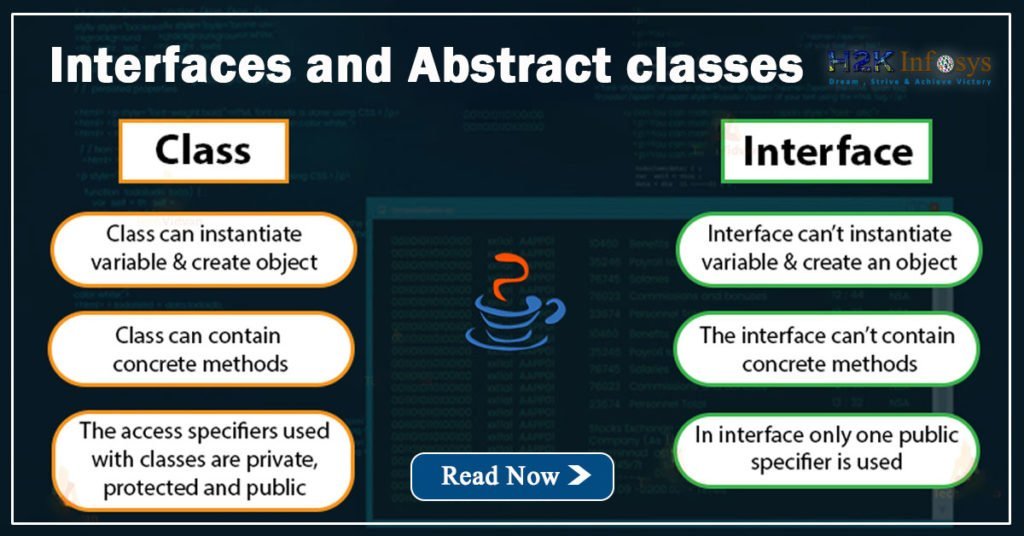Introduction to Binary Portability Testing
Binary Portability Testing is the process of verifying that a compiled application runs correctly across different platforms without recompilation. QA teams use this testing to confirm that binaries behave the same on various operating systems, processor architectures, and runtime environments.
In enterprise software, teams often ship precompiled binaries. These binaries must function on multiple Linux distributions, Windows versions, or cloud environments. Binary Portability Testing ensures reliability in these scenarios and reduces post-release defects.
According to industry surveys, over 60 percent of production failures relate to environment differences rather than logic errors. This statistic highlights why Binary Portability Testing plays a direct role in software stability and customer satisfaction.
Why Binary Portability Testing Matters in QA
Modern applications rarely live in a single environment. Enterprises deploy software on physical servers, virtual machines, containers, and cloud platforms. Binary Portability Testing helps QA teams detect failures caused by system-level differences.
Key reasons this testing matters include:
- Reduced production outages across platforms
- Improved customer trust and retention
- Lower support and maintenance costs
- Faster global software distribution
For learners enrolled in QA tester training, understanding Binary Portability improves employability. Many hiring managers expect QA engineers to validate software beyond functional behavior.
Binary Portability Testing vs Source Portability Testing
QA professionals often confuse binary and source portability. The difference is important.
Binary Portability checks whether the same compiled executable runs on multiple systems.
Source portability testing checks whether source code can compile successfully on different platforms.
In real-world QA Testing courses, trainers emphasize binary checks because end users rarely recompile software. They rely on distributed binaries to work out of the box.
Real-World Example of Binary Portability Testing
Consider a financial reporting tool compiled on Ubuntu 20.04. The vendor distributes the same binary to clients using Red Hat Linux and Amazon Linux. Without Binary Portability, subtle differences in system libraries can cause crashes.
QA teams test the binary on each supported platform. They verify startup behavior, data processing, and file handling. This approach prevents costly failures in regulated industries like banking and healthcare.
Key Components Checked During Binary Portability Testing
QA teams focus on system-level behavior rather than application logic during Binary Portability Testing. Common focus areas include:
- Operating system compatibility
- CPU architecture behavior
- Library dependencies
- File system handling
- Network stack interaction
- Security permissions
These checks ensure the binary behaves consistently across environments.
Tools Commonly Used for Binary Portability Testing
QA engineers rely on specialized tools to perform Binary Portability effectively.
Popular tools include:
- Docker for controlled environment simulation
- VirtualBox and VMware for OS-level testing
- ldd for dependency validation on Linux
- strace for system call analysis
- CI pipelines for automated cross-platform testing
In Quality assurance software testing courses, learners practice using these tools to build real testing workflows.
Step-by-Step Guide to Binary Portability Testing
This section explains how QA engineers perform Binary Portability Testing in a structured way.
Step 1: Identify Supported Platforms
List all operating systems, versions, and architectures supported by the product.
Step 2: Prepare Test Environments
Create virtual machines or containers that match each target platform.
Step 3: Deploy the Binary
Install the same compiled binary across all environments.
Step 4: Validate Execution
Run startup tests, core workflows, and shutdown checks.
Step 5: Monitor System Behavior
Track memory usage, CPU load, and system calls.
Step 6: Document Results
Record differences, failures, and environment-specific issues.
This structured process makes Binary Portability repeatable and auditable.
Sample Command Used in Binary Portability Testing
Below is a simple Linux example used during Binary Portability Testing:
ldd application_binary
This command lists shared library dependencies. QA testers confirm that required libraries exist on all target systems.
Such hands-on practice is a core part of QA online training programs.
Common Challenges in Binary Portability Testing
Despite its value, Binary Portability Testing presents challenges.
Common issues include:
- Missing system libraries
- Different kernel versions
- File permission differences
- Hardware-specific behavior
- Performance variations
Experienced QA engineers learn to identify these issues early through structured testing.
Role of Binary Portability Testing in CI/CD Pipelines
Modern DevOps pipelines include automated checks. Binary Portability fits naturally into CI/CD workflows.
QA teams automate deployment of binaries across containers and virtual machines. Automated scripts validate execution and log failures. This integration reduces release risks and accelerates delivery.
Industry Case Study: Cloud Software Vendor
A SaaS provider released a monitoring agent used across customer servers. Initial versions failed on older Linux kernels. After implementing Binary Portability Testing, defect rates dropped by 40 percent.
This case shows how proactive testing protects brand reputation and reduces customer churn.
Skills QA Engineers Gain from Binary Portability Testing
Learning Binary Portability builds valuable technical skills:
- OS-level debugging
- Environment configuration
- Automation scripting
- Root cause analysis
- Infrastructure awareness
These skills align strongly with modern Quality assurance tester training programs.
How Binary Portability Testing Supports Compliance
Industries like healthcare and finance demand strict reliability. Binary Portability supports compliance by ensuring consistent behavior across approved environments.
Auditors often review test evidence. Well-documented testing results help organizations meet regulatory requirements.
Career Relevance for QA Professionals
Recruiters increasingly look for QA engineers who understand systems, not just test cases. Experience with Binary Portability signals maturity and technical depth.
Learners completing QA Testing courses with this skill gain an advantage in competitive job markets.
Best Practices for Effective Binary Portability Testing
Follow these best practices:
- Test on real target environments
- Automate wherever possible
- Track environment configurations
- Validate both functionality and performance
- Retest after system updates
Applying these practices ensures Binary Portability delivers consistent value.
How QA Training Programs Teach Binary Portability Testing
High-quality QA online training programs include labs, simulations, and real binaries. Learners practice deploying software across platforms and diagnosing failures.
This hands-on exposure prepares students for real enterprise QA roles.
Key Takeaways
- Binary Portability Testing ensures compiled software runs reliably across platforms
- It reduces production failures caused by environment differences
- QA engineers use tools, automation, and structured workflows
- This skill improves job readiness and career growth
Conclusion
Master Binary Portability Testing to strengthen your QA expertise and deliver stable, cross-platform software.
Enroll in H2KInfosys QA programs today to gain hands-on skills and advance your testing career with confidence.


























14 Responses
Binary Portability Testing
Binary portability testing is a testing executable for portability across platforms and environments, usually for the conformation to an Application Binary Interface specification. The Application Binary Interface (or ABI) defines a system interface for compiled application programs and also different for different types of hardware architecture. Since the binary specification includes information specific to the computer processor architecture for which it is intended, it is not possible to specify for a single document for all possible System. Hence, ABI is a family of specifications, rather than a single one.
his binary portability testing has got to be conducted on different types of software platforms.
• Windows(x86,X86-64)
• Linux
• Mac-OS
• Java
• Solaris
• Android
Binary Portability is the testing of one application that was developed in a certain environment that is move to another environment. It is simply to test how an application works once it is moved from it original environment to a foreign environment.
ABI (Application Binary Interface) Portability Testing is a non-functional testing methodology that determines the benefit or difficulty with which a software component or an application can be moved from one environment to a different one. These results help find out how easily a software component developed in one environment can be utilized in any other environment. The term environment refers to moving from one software operating system to different operating system, one browser to different browser or from one database version to different database version. A measurement of portability is that, the effort that’s required to move the software component from one environment to a different environment. One unit of portability measurement is to calculate the cost to adopt a software to the new environment compared to the value of redevelopment of software.
Binary Portability Testing is a kind testing that is performed to check the portability across different platforms and environments. This kind of testing is performed to confirm an Application Binary Interface (ABI) specification. Binary Portability Testing is performed on different types of OS, such as Windows, Linux, Mac, Android, Solaris, Java, etc.
Portability Testing is the type of Software Testing which is carried out to determine the degree of ease or difficulty to which a software application can be effectively and efficiently transferred from one hardware, software or environment to another one.
Binary Portability Testing is a kind of testing that is performed to check the portability across different platforms and environments. This kind of testing is performed to confirm an Application Binary Interface (ABI) specification. Binary Portability Testing is performed on different types of Operating System, such as Windows, Linux, Mac, Android, Solaris, Java, etc.
The Application Binary Interface defines a system for compiled application programs and is also different for various forms of hardware architecture. ABI is about how the system makes calls to OS.
This binary portability testing has got to be conducted on different types of software platforms.This binary portability testing has got to be conducted on different types of software platforms.
Portability Testing is a non functional type of testing which helps in determining whether the functionality of the application is as expected on various operating systems and various browsers. Performance and responsiveness of an application is tested across various browsers and various operating systems.
Binary portability testing is a testing executable for portability across platforms and environment.
Here the test results which are obtained from portability testing help find out how easily a software component developed in one environment can be utilized in any other environment.
Binary portability testing is the non functional testing methodology that determines how the software or its component is easy or difficult when it is moved from one environment ( operating system/browser) to other environment.
Binary Portability is Testing an executable for portability across platforms and environments, usually for the conformation to an Application Binary Interface(ABI) specification.
The Application Binary Interface (or ABI) defines a system interface for application programs and also different types of hardware architecture. Binary specification includes information specific to the computer processor architecture for which it is intended, it is not possible to specify for a single document for all possible System.
Application binary interface defines how these interfaces should be made and complied. The Application Binary Interface defines a system for compiled application programs and is also different for various forms of hardware architecture
Binary portability testing is a testing executable for portability across platforms and environments, usually for the conformation to an Application Binary Interface specification.
This binary portability testing has got to be conducted on different types of software platforms Windows(x86,X86-64)
Linux, etc
Binary portability testing is a testing executable for portability across platforms and environments, usually for the conformation to an Application Binary Interface specification. Since the binary specification includes information specific to a selected computer processor architecture, it isn’t possible to specify a single document for all possible systems.
Binary Portability Testing
Binary portability testing is a testing executable for portability across platforms and environments, usually for the conformation to an Application Binary Interface specification. The Application Binary Interface (or ABI) defines a system interface for compiled application programs and also different for different types of hardware architecture. Since the binary specification includes information specific to the computer processor architecture for which it is intended, it is not possible to specify for a single document for all possible System. Hence, ABI is a family of specifications, rather than a single one.
his binary portability testing has got to be conducted on different types of software platforms.
• Windows(x86,X86-64)
• Linux
• Mac-OS
• Java
• Solaris
• Android